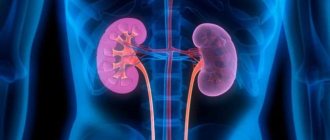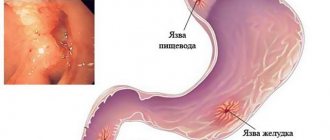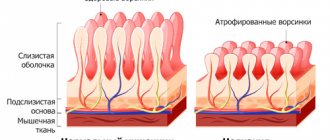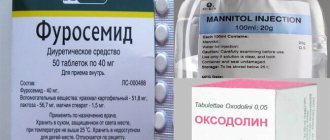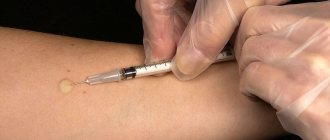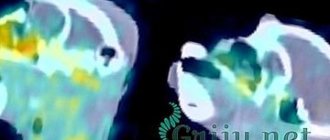Kidney pathologies occupy a leading place among modern human diseases. And one of them is kidney nephrosclerosis. The disease involves the primary proliferation of replacement renal tissue and subsequent shrinkage of the organ due to a critical decrease in its functions. That is, due to poor functioning of the vascular system of the kidneys, healthy kidney tissue is replaced with connective tissue. Because of this, the blood supply to the kidneys is reduced and their functions gradually decline.
Important: with timely diagnosis of the disease and effective treatment, renal sclerosis can be completely defeated. If the disease is diagnosed late or the treatment was not carried out entirely correctly, then, at best, one can only achieve stable remission. In the worst cases (lack of treatment for the pathology), death occurs.
Causes of the disease
It is worth knowing that nephrosclerosis itself is not an independent disease, this pathology is a consequence of problems with blood vessels in humans.
It is worth knowing that nephrosclerosis itself is not an independent disease. This pathology is a consequence of problems with blood vessels in humans. Therefore, nephrosclerosis most often affects those patients who suffer from atherosclerosis, hypertension, thromboembolism, thrombosis and other diseases of the cardiovascular system. In this case, renal pathology can be divided initially into two groups:
- Primary nephrosclerosis;
- Secondary disease.
In the first case, the pathology develops due to problems with the blood supply to the kidneys. Those, in turn, begin against the background of pathology of the vascular system. Primary nephrosclerosis can even lead to kidney infarction, which is unfavorable for the patient. In the worst case, the patient will experience a toxic coma and death. In turn, primary nephrosclerosis is classified depending on the root cause of its development. The following types of primary pathology are distinguished:
- Atherosclerotic nephrosclerosis. It develops under the influence of atherosclerotic plaques deposited on the walls of blood vessels and renal arteries in the patient’s body. This leads to a decrease in vascular elasticity and, as a consequence, to renal ischemia. This type of disease is considered the most favorable for the patient, since part of the renal parenchyma is largely not affected by pathology and the kidney continues to function.
- Hypertensive nephrosclerosis. This type of kidney pathology develops due to spasm of the renal vessels, which occurs against the background of hypertension in the patient. Moreover, this type of renal sclerosis is divided into two more subtypes - arteriolosclerotic nephrosclerosis and arterionecrotic renal sclerosis. The main difference between them is their good quality. The first subtype (arteriolonephrosclerosis) does not pose a strong danger to the patient, while arteriononecrotic pathology is malignant.
- Involutive nephrosclerosis. It develops mainly in patients from the 50+ group under the influence of calcium deposited on the walls of blood vessels. As a result, the permeability of blood vessels and their elasticity decreases.
Secondary nephrosclerosis develops as a complication after the following pathological conditions:
Apaan Mudra for the treatment of diseases and restoration of the kidneys
- Pyelonephritis;
- Glomerulonephritis;
- Stones in the kidneys;
- Kidney amyloidosis;
- Kidney tuberculosis;
- Diabetic glomerulosclerosis;
- Nephropathy during pregnancy;
- Complex kidney injuries;
- Kidney surgery;
- Kidney infarction.
Renal nephrosclerosis - what is it?
This is the process of sequential replacement of the kidney parenchyma with connective tissue, which causes a decrease (shrinkage) in the size of the organ and a decrease in its functionality. Without treatment, complete cessation of performance may occur.
Previously, it was believed that the main cause of the disease was glomerulonephritis. Today, doctors have revised this point of view, identifying diabetes mellitus and arterial hypertension as its main provocateurs.
According to the mechanism of development, primary and secondary nephrosclerosis of the kidneys are distinguished. Each form of the disease has its own prerequisites for its occurrence, as well as characteristic features. It is advisable to dwell on this issue in more detail.
Clinical picture of the disease
Nephrosclerosis is a rather insidious pathology that does not manifest itself in the initial stages.
Those who want to understand what nephrosclerosis is should know that nephrosclerosis is a rather insidious pathology that does not manifest itself in the initial stages. That is, a person may not even suspect that he has a kidney pathology. In most cases, it is possible to accidentally diagnose the disease at the initial stage during a general urine test for a standard medical examination. If the pathology is advanced, the patient will have the following symptoms:
- Swelling of the face and limbs;
- Pain in the lumbar region;
- Elevated blood pressure that cannot be corrected with antihypertensive drugs;
- Headache that does not go away even with taking antispasmodics and analgesics;
- Change in urine color to darker or red;
- Frequent need to urinate, especially at night;
- Reducing the daily volume of urine to 0.5 l;
- Aversion to meat dishes;
- Fatigue and weakness;
- Itchy skin;
- A sharp decrease in body weight.
Important: all of these nephrosclerosis symptoms, whether taken together or even individually, require urgent hospitalization of the patient.
Treatment of the disease
In the case of a benign nature of the disease, treatment involves the use of diuretic drugs, as well as those that lower blood pressure. A long-term diet is mandatory, during which it is necessary to consume low-protein foods and low salt content. It is recommended to increase the amount of grains, fresh vegetables and fruits in the diet, and drink at least 2 liters of water per day.
The patient must undergo regular examinations to obtain information about the condition of the organ and its functioning.
During the period of therapy, it is necessary to treat chronic constipation, since the accumulation of toxins negatively affects the condition of the kidneys.
In order to improve renal blood circulation, regular exercise is recommended. Frequent walks in the fresh air and swimming will help improve a person's condition. In some cases, the doctor may advise the patient to visit the bathhouse and sauna, as this increases sweating and removes harmful substances from the body.
If the pathology is malignant, treatment must be carried out in a hospital setting. In this case, some caution must be taken when taking medications so as not to worsen the patient's condition. Sometimes surgery may be required to remove blockages in blood vessels or remove the atrophied part of the kidney. Most often, after such an operation, the patient undergoes hemodialysis or a kidney transplant.
With this type of nephrosclerosis, the prognosis is rarely favorable, since it is almost impossible to normalize the body’s condition.
Treatment can be carried out at home at the initial stage of the disease. If complications develop and there is a sharp deterioration in health, urgent medical attention is required.
When treating nephrosclerosis, the following procedures and medications can be used:
- physiological and glucose solution (used to remove harmful substances from the body);
- polyionic solutions (used to regulate the acid-base balance);
- glandular preparations, erythropoietins;
- blood transfusion of some components (with the development of anemia);
- medicines to lower blood pressure;
- anticoagulants (used at the initial stage of the disease);
- diuretics (if there are symptoms of fluid retention in the body);
- potassium and calcium preparations;
- sorbents (used to reduce the amount of toxins in the intestines);
- multivitamin complexes;
- hepatoprotectors (drugs that protect the liver);
- choleretic agents (usually of plant origin).
Diagnosis of the disease
Ultrasound of the kidneys and urinary system is used to diagnose pathology.
All patients at risk (with the diseases listed above, such as hypertension, etc.) should regularly examine their kidneys so as not to miss the possible onset of the development of the disease. The following methods are used to diagnose pathology:
- General urine analysis and urine analysis according to Zimnitsky;
- Ultrasound of the kidneys and urinary system;
- X-ray examination with a contrast agent to determine kidney function;
- CT and MRI to assess the functioning of an organ in the presence of pathology in the patient’s body.
Therapy
Treatment of nephrosclerosis can be carried out both conservatively and surgically, depending on the condition of the patient's kidneys.
Treatment of nephrosclerosis can be carried out both conservatively and surgically, depending on the condition of the patient's kidneys at the time of diagnosis. So, if a conservative treatment method is applied to the patient, then its tactics will be as follows:
- Normalization of blood pressure. To do this, the patient is prescribed antihypertensive drugs that significantly regulate blood pressure levels.
- Stopping the progression of the disease. For this, the patient is prescribed drugs such as Prednisolone and other cytostatic drugs.
- Providing nutrition to kidney cells. To stop the connective tissue from growing, nephroprotective drugs are prescribed. They help stimulate the growth of healthy kidney tissue.
- Reducing cholesterol levels. Here they prescribe drugs from the group of statins, which normalize fat metabolism in the body and have a positive effect on the blood vessels of the kidneys.
- Salt-free diet. Along with drug therapy, the patient is prescribed a salt-free diet and nutrition with the exclusion of protein foods or reducing protein in the diet to a minimum.
Additional procedures and surgery
If the patient has critical renal failure, then the patient is indicated for nephrectomy (kidney removal) or a kidney transplant
. If the patient has critical renal failure, then the patient is indicated for nephrectomy (kidney removal) or a kidney transplant. Before surgery, patients may be prescribed hemodialysis (filtering blood through an artificial kidney machine). This procedure gives a relatively good effect if it is carried out three times a week for 4 hours each session.
How to find a kidney recipient and who can become a donor?
Peritoneal dialysis may also be prescribed instead of hemodialysis. The procedure is performed by injecting a special solution into the abdominal cavity to purify the blood. After a certain time, this solution is removed using a catheter. In this way, the blood of a patient with end-stage nephrosclerosis is further purified.
Surgery involves either removal of the kidney (which is unlikely, since most often both kidneys are affected) or organ transplantation. A donor kidney is taken either from a healthy blood relative with his consent, or from a cadaveric donor.
Symptoms and diagnosis of nephrosclerosis
One of the dangers of kidney nephrosclerosis is its asymptomatic nature in the early stages, and therefore patients very often seek help when irreversible processes are already obvious. In laboratory conditions it is possible to detect:
- polyurea;
- microhematuria;
- nocturia;
- decreased urine density;
- protein in urine.
With the disease nephrosclerosis of the kidneys, symptoms may not appear, but the main thing by which pathology can be determined lies directly on the face. One of the characteristic symptoms of the disease is swelling on the face, and in more advanced cases, throughout the body. This is a consequence of decreased osmolarity in the urine.
A more complex situation occurs when arterial hypertension is detected. As a rule, it is malignant and has practically no cure. In this case, the following complications often arise:
- stroke;
- retinal disinsertion;
- swelling and atrophy of the optic nerve papilla, sometimes even blindness;
- overload of the ventricles of the heart.
The main methods for diagnosing this disease are x-ray, radionuclide studies, and ultrasound. Thus, using radionuclide rheography, you can find out how quickly a radiopharmaceutical is accumulated and eliminated. Scintigraphy provides an image of the kidney (although, sometimes due to disease, the organ is not visible at all) and provides information about how radionuclides are distributed throughout the kidney tissue. An angiogram examines the condition of the kidney arteries and the surface layer of the organs. Thanks to urography, it is possible to accurately determine the size of the affected area, and sometimes calcifications can be noticed. Ultrasound examines the general structure of organs: the size of the kidneys is determined, the parenchyma is determined.
At the last stage of the disease (if treatment is not started on time), severe renal failure develops, and the entire body becomes intoxicated with nitrogenous waste.
Considering the severe and irreversible consequences of the disease, you should definitely consult a doctor if:
- swelling is noticed;
- blood pressure often rises;
- headache;
- vision deteriorates.
Diet therapy
After effective treatment of nephrosclerosis, the patient should be very attentive to himself. Any deviations from a normal diet and healthy lifestyle can lead to relapse. The basis for preventing recurrent disease is diet and a healthy lifestyle. Their principles are:
- Do not abuse salt and preservatives;
- Eat strong and rich meat broths less often;
- Maintain your weight at a normal level, avoiding critical gain;
- Maintain a daily drinking regime, consuming at least 2-3 liters of liquid per day;
- Quit smoking and alcohol;
- Take any medications only as prescribed by a doctor;
- Do not get carried away with special and fashionable diets;
- Avoid contact with dyes and other toxic substances;
- Do not overheat in the sun and do not freeze in the water.
In addition, it is advisable to constantly monitor your blood pressure and periodically donate blood for cholesterol and sugar. Remember: preventing a disease is always easier than treating it for a long time and not always successfully.

